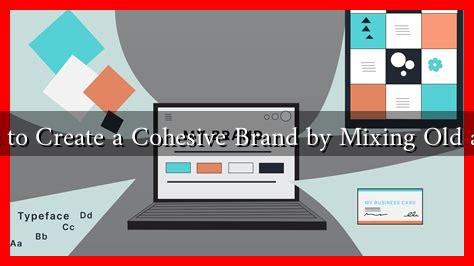-
Table of Contents
Is It Possible to Create a Cohesive Brand by Mixing Old and Modern?
In today’s fast-paced digital landscape, brands are constantly seeking innovative ways to stand out. One intriguing approach is the blending of traditional and contemporary elements to create a cohesive brand identity. This article explores the feasibility of merging old and modern branding strategies, examining the benefits, challenges, and successful examples of brands that have navigated this path.
The Allure of Nostalgia in Branding
Nostalgia is a powerful emotion that can evoke strong connections with consumers. Brands that successfully tap into this sentiment often find themselves resonating deeply with their audience. According to a study by the Journal of Consumer Research, nostalgic branding can enhance consumer loyalty and increase the likelihood of purchase.
- Emotional Connection: Nostalgic branding can create a sense of familiarity and comfort.
- Timeless Appeal: Classic elements can lend a sense of authenticity and trustworthiness.
- Storytelling: Brands can weave narratives that connect past and present, enriching the consumer experience.
Modern Aesthetics and Technology
On the other hand, modern branding often emphasizes sleek design, innovation, and digital engagement. Brands that embrace contemporary aesthetics can attract younger audiences and adapt to changing market dynamics. The integration of technology into branding strategies is also crucial in today’s digital age.
- Visual Identity: Modern design trends often favor minimalism and bold colors, which can attract attention.
- Digital Engagement: Utilizing social media and online platforms allows brands to connect with consumers in real-time.
- Innovation: Modern brands often leverage technology to enhance customer experiences, such as through augmented reality or personalized marketing.
Finding the Balance: Case Studies
Several brands have successfully blended old and modern elements to create a cohesive identity. Here are a few notable examples:
Coca-Cola
Coca-Cola has masterfully combined nostalgia with modern branding. Their classic logo and vintage advertisements evoke a sense of nostalgia, while their recent campaigns utilize contemporary design and digital marketing strategies. The “Share a Coke” campaign, which personalized bottles with popular names, is a prime example of how Coca-Cola has successfully engaged a younger audience while maintaining its traditional roots.
Apple
Apple is another brand that has effectively merged old and modern elements. While its products are at the forefront of technological innovation, the company often draws on classic design principles. The simplicity and elegance of Apple’s product design harken back to timeless aesthetics, while their marketing strategies leverage modern digital platforms to reach consumers.
Challenges of Mixing Old and Modern Branding
While blending old and modern branding can be effective, it is not without its challenges. Brands must navigate potential pitfalls to ensure a cohesive identity:
- Inconsistency: Merging different styles can lead to a disjointed brand image if not executed carefully.
- Target Audience Confusion: Different demographics may respond differently to nostalgic versus modern elements, leading to mixed messages.
- Brand Dilution: Overemphasizing one aspect over the other can dilute the brand’s core identity.
Conclusion: The Path to a Cohesive Brand Identity
Creating a cohesive brand by mixing old and modern elements is not only possible but can also be highly effective when done thoughtfully. Brands that successfully navigate this blend can evoke nostalgia while appealing to contemporary sensibilities, ultimately fostering deeper connections with their audience. The key lies in finding the right balance, ensuring consistency, and understanding the target demographic. As the landscape of branding continues to evolve, those who can harmonize the past with the present will likely stand out in an increasingly crowded marketplace.

